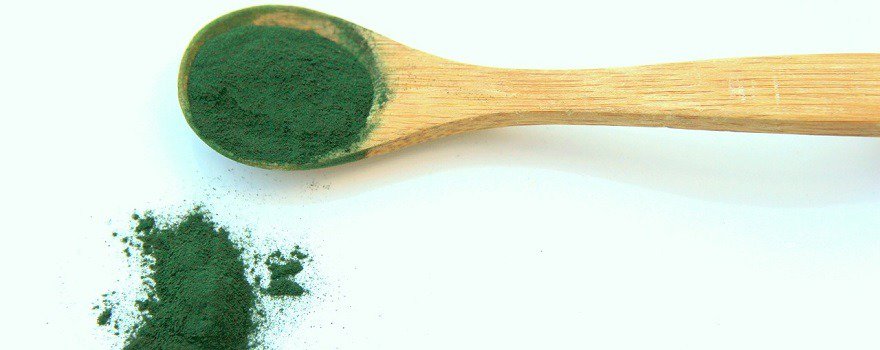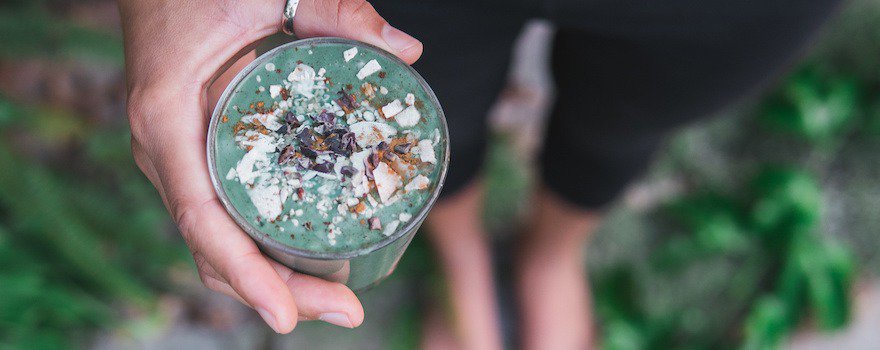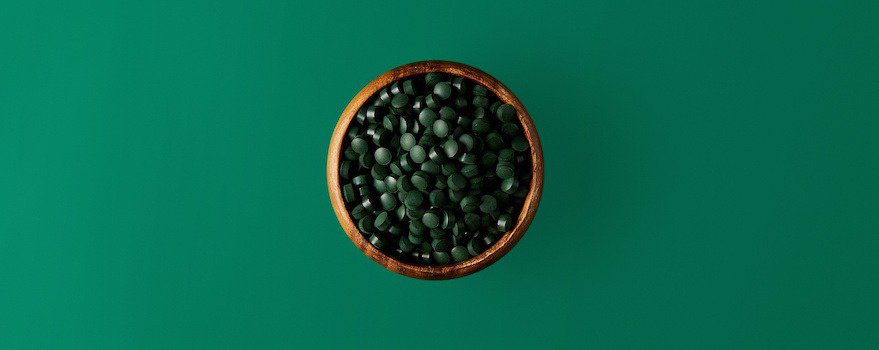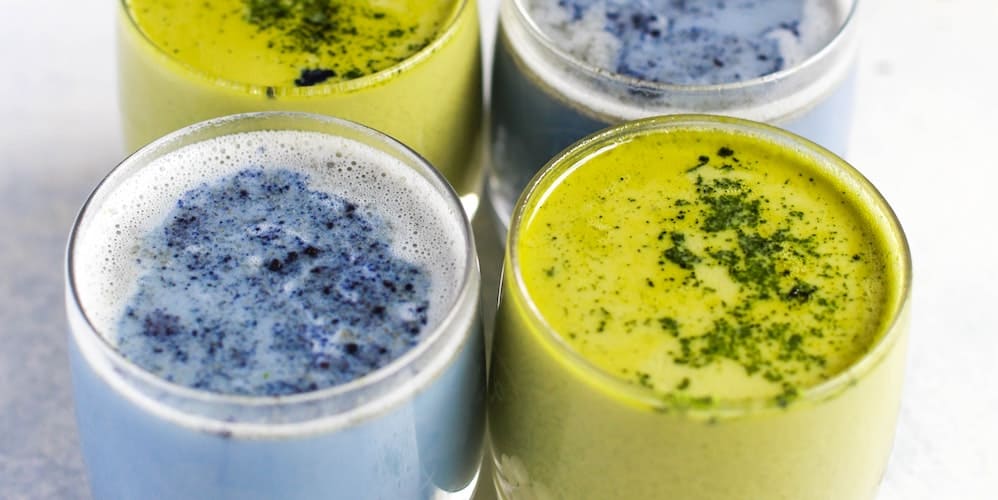What is spirulina?
A cyanobacterium that appeared 3.5 billion years ago
Spirulina (Arthrospira platensis) belongs to the cyanobacteria family. It lives in colonies and grows in the form of spiral filaments, which is how it got its name.
Spirulina feeds by photosynthesis largely thanks to its blue-green pigment: phycocyanin. This allows it to transform light energy into organic matter.
Spirulina is believed to have first appeared on Earth 3.5 billion years ago. It is naturally present in some fresh and alkaline lakes, such as those in Mexico and Chad, where it finds the necessary conditions for its development.
In our latitudes, many small producers are embarking on growing spirulina in artificial ponds.
Also read Our tips for choosing the best spirulina
An ultra-nutritious superfood
Spirulina is increasingly popular today, and the global demand is growing. It’s no surprise as it offers numerous health benefits, many of which have been confirmed by scientific studies: reduces fatigue, improves athletic performance, strengthens and protects the immune system… All thanks to its exceptional nutritional composition.

Together with klamath (Aphanizomenon flos-aquae) and chlorella (Chlorella vulgaris), spirulina is among the world’s most nutritious superfoods. Its nutritional values far exceed those of many foods.
For example, it can contain up to 70% protein, which is about three times more than meat!
Spirulina also contains 18 amino acids (including 8 essential), B vitamins (including pseudo-vitamin B12), E and K vitamins, omega-6, antioxidant pigments, as well as minerals and trace elements among which is iron.
Also read Artisanal spirulina made with love in the Southwest
Spirulina and iron: what’s the relationship?
An excellent source of iron
Spirulina contains 28.5 mg of iron per 100 g, more than offal, seafood, tofu, or beans. Today, it is one of the best dietary sources of iron.
It thus prevents iron deficiency and the associated symptoms: anemia, chronic fatigue, muscle weakness, hair loss… It’s also an ideal food for vegetarians and vegans, who are often concerned about this deficiency.
Highly absorbable iron
In general, there are two types of iron: heme iron and non-heme iron. The former is mainly found in meats and fish. The latter, on the other hand, comes from plants, legumes, cereals, eggs, and dairy products.
The body does not assimilate these forms of iron in the same way: heme iron is 2.5 times better absorbed than non-heme iron. However, this does not seem to apply to spirulina, which, although plant-based, contains highly absorbable iron, as shown in this study.
Moreover, unlike many plants, cereals, and legumes, spirulina does not contain iron-inhibiting substances such as phytates, oxalates, and tannins.
These compounds tend to decrease the availability of iron in the body and its absorption by the intestinal mucosa. Spirulina is all the more interesting for replenishing iron.

Spirulina against iron deficiency anemia
An iron deficiency can cause iron deficiency anemia characterized by a decrease in hemoglobin levels in the blood. Indeed, iron is responsible for forming this protein found within red blood cells, ensuring oxygen transport to tissues.
Iron deficiency anemia, also known as martial deficiency anemia, is one of the most common forms of anemia. It causes significant fatigue, pale complexion, shortness of breath with minimal exertion, headaches, and dizziness…
Various studies have shown that consuming spirulina can restore normal hemoglobin levels in people who are deficient. Its effectiveness in regenerating hemoglobin is even comparable to that of iron citrate, prescribed in cases of iron deficiency.
This is notably demonstrated by this study which examined the beneficial effects of microalgae (spirulina, chlorella, synechococcus) on iron deficiency anemia.
To prevent a possible iron deficiency, spirulina consumption is particularly interesting for vegetarians, vegans, and people with a plant-based diet or women with heavy menstrual bleeding.
Consuming Spirulina Well
In what form?
Spirulina can be consumed as flakes, powder, or tablets. Tablets have the advantage of being tasteless but have a less interesting nutritional value.
To benefit from a good iron intake, and if its iodine taste does not bother you, we recommend choosing flakes or powdered spirulina, which are more “natural” and less processed than tablets.
You can easily cook with it or add it to your smoothies, health drinks, and original recipes.
What is the recommended dosage?
The recommended daily iron intake for adults is 1 to 2 mg for men and 2 to 4 mg for women. Just one tablespoon of spirulina covers 11% of these daily needs.
Generally, it is recommended to consume 2 to 5 g of spirulina per day to boost iron intake and avoid deficiencies.
Iron supplementation through spirulina should be part of a healthy and balanced diet and continue for several months to fully appreciate its benefits.
If iron deficiency anemia is linked to an inadequate diet, it is also important to change some of your eating habits.

Combining Spirulina and Vitamin C
Spirulina iron is better absorbed when associated with vitamin C. Indeed, it improves its absorption in the small intestine, as shown by this study.
Therefore, it is important to consume spirulina with foods rich in vitamin C such as camu camu or acerola. In this way, the body will retain more iron.
Conversely, avoid consuming certain foods at the same time as spirulina, such as coffee, eggs, or dairy products, as calcium can inhibit iron absorption.
Beware of Excess Iron
It is important not to consume too much spirulina, especially if you are not deficient.
An iron overdose, also known as hemochromatosis, notably increases the risk of cardiovascular diseases.
Therefore, start your spirulina intake with small doses and gradually increase depending on your body’s reactions. Also, feel free to consult your doctor for good medical monitoring and to regularly check your blood iron levels.



